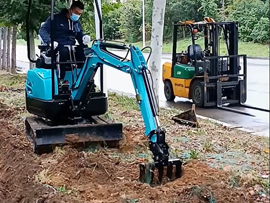How is the digging force of a small excavator calculated?
-
Usually, the digging force test of a small excavator is carried out at a specialized construction machinery test site. The small excavator is fixed on a test platform that can withstand the digging force and is capable of measuring its magnitude. A force sensor is placed at the tip of the bucket, and the sensor is connected to a data acquisition system.
-
Operate the excavator to perform standard digging actions. For example, insert the bucket into simulated soil or other media at a certain speed and angle. The data acquisition system will then record the value of the digging force measured by the force sensor. This method can relatively realistically reflect the digging force of the excavator under actual digging working conditions.
-
The digging force can also be estimated through data collected during the actual operation process. For example, strain gauges are installed on the working devices of the excavator (such as the dipper arm and bucket). These strain gauges can measure the strain conditions of the working devices during the digging process.
-
Based on the relationship between strain and force (derived from formulas in material mechanics and experimental calibration), the digging force can be calculated. At the same time, by combining the working parameters recorded by the excavator's control system (such as the flow rate and pressure changes of the hydraulic system), the calculation result of the digging force can be further refined. The advantage of this method is that it can obtain digging force data in the actual working environment, but it requires complex sensor installation and data processing.


